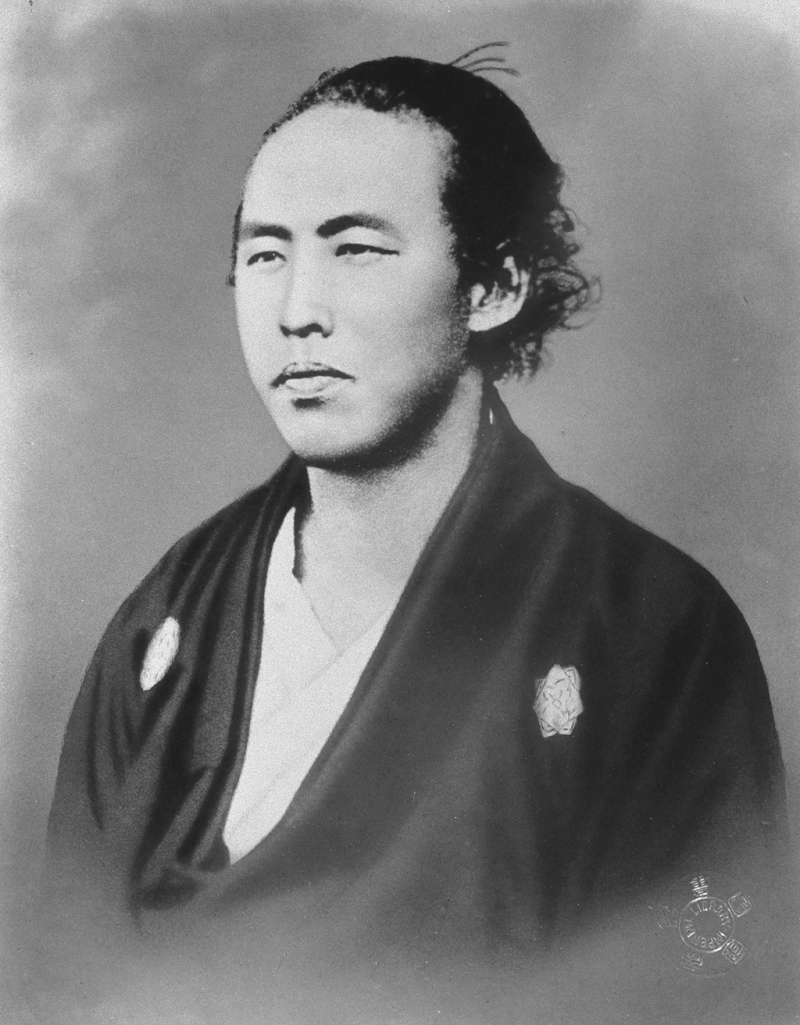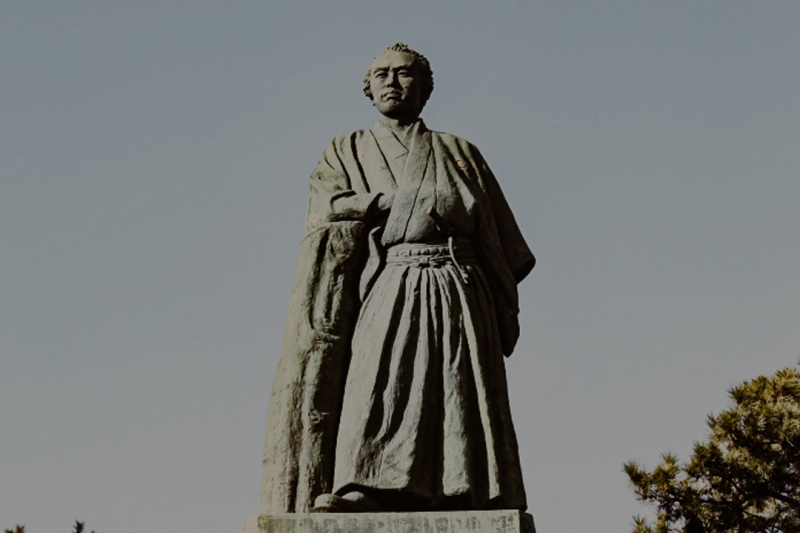Sakamoto Ryoma
Sakamoto Ryōma (坂本龍馬, 3 January 1836 - 10 December 1867) was a Japanese samurai and a key figure in the Bakumatsu and the establishment of the Empire of Japan during the late Edo period.
He was a low-ranking samurai from Shikoku's Tosa Domain who became an outspoken opponent of the Tokugawa Shogunate after Japan's sakoku isolationist policy ended. Ryōma, also known as Saitani Umetarō (才谷梅太郎), worked against the Bakufu, the Tokugawa shogunate's government, and was frequently pursued by their supporters and the Shinsengumi. Ryōma supported democracy, Japanese nationalism, the return of power to the Imperial Court, the abolition of feudalism, and Japan's moderate modernization and industrialization. Ryōma successfully negotiated the Satchō Alliance, which united the powerful rival Chōshū and Satsuma domains against the Bakufu. Ryōma and his companion Nakaoka Shintarō were assassinated in December 1867, shortly before the Boshin War and the Meiji Restoration.
Ryōma was a visionary who envisioned an independent Japan free of feudalism and the caste system, inspired by the United States' example of "all men are created equal." Ryōma admired democratic principles and studied democratic governance, particularly that of the United States Congress and the British Parliament, as a model for Japan's post-Restoration governance. Ryōma contended that the Imperial Court lacked the resources and wherewithal to run the country after centuries of having little to no political power. While discussing the future model of Japanese government with Gotō Shōjirō on board a Tosa ship outside Nagasaki in 1867, Ryōma wrote the "Eight Proposals While Shipboard" (『船中八策』). Ryōma outlined the need for a democratically elected bicameral legislature, the creation of a constitution, the establishment of a national army and navy, and the regulation of gold and silver exchange rates. Ryōma read about the Western world and realized that Japan needed to modernize in order to compete with an industrially and technologically advanced outside world. Ryōma's proposals are thought to have served as the foundation for Japan's subsequent parliamentary system, which was implemented after his death.
Ryōma has also been regarded as an intriguing blend of the traditional and modern, as evidenced by his preference for samurai garb while wearing Western shoes. In Japanese popular culture, Ryōma has been heavily featured and romanticized.












